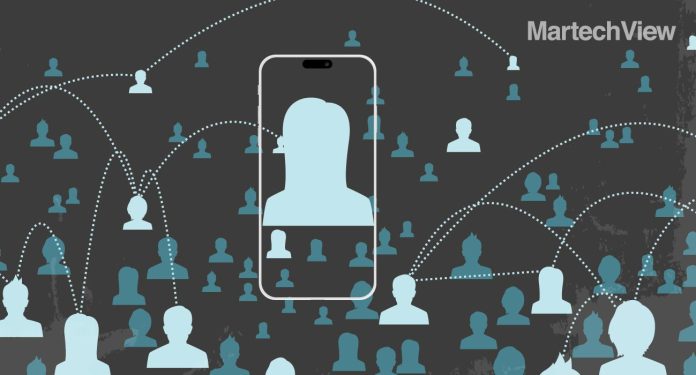Today, with various adtech intermediaries involved within the programmatic supply chain, its efficiencies have been gravely reduced. Does an alternative solution exist?
Google’s complete annihilation of third-party cookies may be just around the corner, but it makes little difference to consumers who, for a long time, have increasingly opted out of sharing their data with third parties, using browsers that block cookies. This shift in consumer behavior in line with privacy changes has caused the open web to collapse. The impact of this is that advertisers are losing market share and wasting budgets.
US display ad spend is set to grow by 15.7% this year, reaching $163.29 billion, according to eMarketer. Traditional adtech, which relies on cookies and IDs, struggles to reach consumers due to addressability challenges, resulting in 90% of ad spend reaching just 30% of an advertiser’s audience. The open web is ineffective, but an alternative solution exists.
An inefficient ad system
The open web aimed to deliver multiple capabilities and efficiencies for advertisers and publishers alike. It allowed advertisers to find their known audiences at scale across premium environments whilst controlling and efficiently using their spend across media owners. For publishers, the open web helped them grow revenue from non-endemic advertisers and reduce operational costs while maximizing yield.
Today, with various adtech intermediaries involved within the programmatic supply chain, its efficiencies have been gravely reduced. Intermediaries’ take rate is 20-40%, and addressability within open web programmatic has plummeted to 30%. For a CMO, it is deeply inefficient for advertisers to spend the majority of their budget for such little reach.
The supply chain is no longer effective for publishers either, as they end up with reduced CPMs and higher operational costs to keep up any revenue they can gain from open auctions.
Replicating not innovating
Open programmatic resulted in advertiser and publisher relationships growing further apart. Marketers are beginning to recognise that if they want to achieve addressability and efficiencies, they must work more directly with publishers. Importantly, marketers also need
to choose their supply path carefully so as not to fall into the territory of made-for-advertising (MFA) websites.
Whilst the industry is working to solve the addressability crisis through various identity solutions, publisher solutions aim to replicate the one-to-one targeting our industry has become accustomed to.
Authentication and knowing your audiences are powerful for publishers, helping them to deliver unique customer experiences to their audiences. However, whilst authentication (email addresses) is a common language across both advertisers and publishers, it is a tool that will rarely scale for activation.
Any replication of one-to-one targeting or privacy workarounds doesn’t consider the consumer, which is how the advertising industry got into its current state. Ultimately, advertisers will not be able to achieve the scale they need with just authentication and will still be scrambling to improve their brand equity and, ultimately, their brand value if they cannot find a scalable solution.
Maximizing efficiency through new capabilities
As an industry, we must believe that a new way of working is possible. We don’t have to replicate open programmatic’s flaws. Still, we can look to its benefits and deliver campaigns that put the consumer first and deliver to the needs of both advertisers and publishers.
Capabilities exist today that provide addressability, control, transparency and, importantly, efficiencies. These efficiencies ensure that publishers can grow their revenue through close advertiser relationships and that advertisers can work closely with publishers to deliver quality advertising in premium environments.
With the right solution, advertisers can leverage their first-party data and match this with publishers but, importantly, amplify this audience via modeling, which uses machine learning to achieve incremental reach and deliver quality audiences.
Direct paths between advertisers and publishers
A large global technology brand that spends a significant amount of money on digital display advertising is working to solve the reachability crisis. They ran a global campaign in the US, Canada and the UK across 15+ publishers, increasing their reachability by 150% on average, reaching more users in a cookieless environment than the largest walled gardens
and largest adtech companies. Brands like these are only scratching the surface with the scale they achieve when they choose the right path to publishers.
Publishers working in this way have seen a 432% uplift in average CPMs compared to the average open web CPM and got the opportunity to capture more direct spend from the advertiser.
This new way of working adds to a publisher’s direct business, ensuring they can deliver additional value to mutual advertisers, capture more spend, and work with new brands. Dan Prescott, Director Data Product & Operations at Trusted Media Brands, said: “Direct pathways to data collaboration is another revenue stream that publishers can benefit from without risking data leakage. It offers a safe method of sharing data and working collaboratively with advertisers as we prepare for a cookie-less future.”
He added: “Though early, we’ve already seen revenue lift through these deals and have continued to generate learnings with each iteration, building insights to apply for the future. This opportunity ultimately helps us expand the reach and power of TMB first-party data.”
News UK is “building simple and efficient pipelines for advertisers to work more directly with publishers and access publisher first-party data in a safe and privacy-compliant manner, all whilst increasing scale,” said Bedir Aydemir, Director of Data, The Sun (News UK).
He added: “Direct pathways to advertisers have helped us to capture incremental revenue beyond the open web. In the future, the only way to find consented, engaged users that can be targeted to increase relevance and reduce wastage will be to work directly with publishers. However, we accept that some advertisers will want to continue to trade using established programmatic techniques.”
This is the future of advertising. One where privacy is protected and advertisers can efficiently reach their audience and prospect to new audiences. And one where publishers aren’t racing to the bottom but growing their CPMs and revenue through direct pathways.










